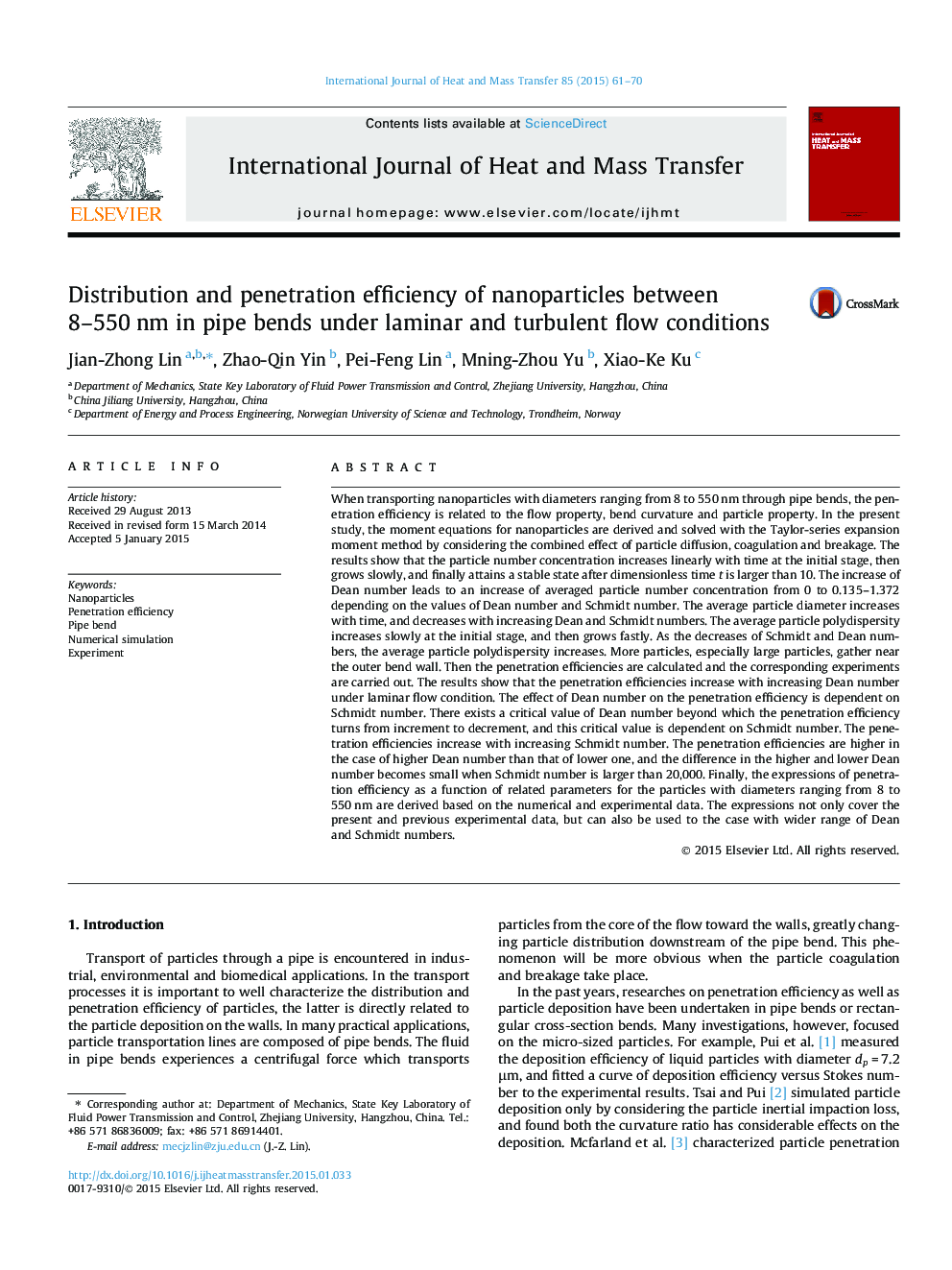| Article ID | Journal | Published Year | Pages | File Type |
|---|---|---|---|---|
| 7056650 | International Journal of Heat and Mass Transfer | 2015 | 10 Pages |
Abstract
When transporting nanoparticles with diameters ranging from 8 to 550Â nm through pipe bends, the penetration efficiency is related to the flow property, bend curvature and particle property. In the present study, the moment equations for nanoparticles are derived and solved with the Taylor-series expansion moment method by considering the combined effect of particle diffusion, coagulation and breakage. The results show that the particle number concentration increases linearly with time at the initial stage, then grows slowly, and finally attains a stable state after dimensionless time t is larger than 10. The increase of Dean number leads to an increase of averaged particle number concentration from 0 to 0.135-1.372 depending on the values of Dean number and Schmidt number. The average particle diameter increases with time, and decreases with increasing Dean and Schmidt numbers. The average particle polydispersity increases slowly at the initial stage, and then grows fastly. As the decreases of Schmidt and Dean numbers, the average particle polydispersity increases. More particles, especially large particles, gather near the outer bend wall. Then the penetration efficiencies are calculated and the corresponding experiments are carried out. The results show that the penetration efficiencies increase with increasing Dean number under laminar flow condition. The effect of Dean number on the penetration efficiency is dependent on Schmidt number. There exists a critical value of Dean number beyond which the penetration efficiency turns from increment to decrement, and this critical value is dependent on Schmidt number. The penetration efficiencies increase with increasing Schmidt number. The penetration efficiencies are higher in the case of higher Dean number than that of lower one, and the difference in the higher and lower Dean number becomes small when Schmidt number is larger than 20,000. Finally, the expressions of penetration efficiency as a function of related parameters for the particles with diameters ranging from 8 to 550Â nm are derived based on the numerical and experimental data. The expressions not only cover the present and previous experimental data, but can also be used to the case with wider range of Dean and Schmidt numbers.
Related Topics
Physical Sciences and Engineering
Chemical Engineering
Fluid Flow and Transfer Processes
Authors
Jian-Zhong Lin, Zhao-Qin Yin, Pei-Feng Lin, Mning-Zhou Yu, Xiao-Ke Ku,
